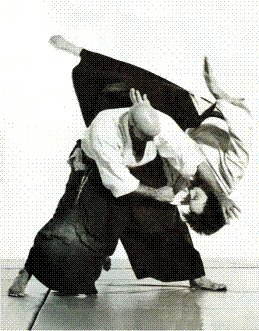Tantodori in Aikido
"We are learning how to apply Aikido techniques when uke uses a dagger." I used to think that also. These days I’m not so sure. In most dojo that I have seen, tantodori takes shape tsuki kotegaeshi, tsuki rokkyo, tsuki gokyo, yokomenuchi gokyo, and ushiro kotegaeshi. Of course you see a few kansetsuwaza thrown in as well. That was fine for me in the beginning. But I realize now that there are two basic flaws in the way that tantodori is usually taught: they don’t take into account the way a person committed to cutting you would attack you, and they don’t take into account the way a person committed to not being cut would defend themselves. In Aikido, most tantodori is conducted with uke performing tsuki, shomengiri, yokomen or kesagiri while holding a wooden tanto. While these are common vectors that any attack may come from, they do not represent a sincere attack given the nature of the knife. An attack with the knife is all over the place. Slashing and thrusting in rapid succession is perhaps the most basic handling of the knife. Training to fight someone when armed with a knife is a most serious business, much more than an all-or-nothing, vector-based, yokomen or tsuki. The person with a knife knows that if their attack fails, that they will most likely be justifiably killed.
Read the complete article at http://www.aikidojournal.com/?id=3149.

 The Art of Aiki es la más completa fuente de información sobre el Aikido en Español. |
The Art of Aiki es la más completa fuente de información sobre el Aikido en Español. |
4 Response to "Tantodori in Aikido"
Por que no lo pones en castellano jodioooo!!!!
Un abrazo.
NKA
Sip je je, mejor en castellano.
Callad callad a ver si le da una venada y lo pone en fabla aragonesa jajaja
Castellano POR FAVOR¡¡¡¡¡¡¡¡
Chabi
Pero qué jodidos que sois... malditos! No veis que el artículo es de Autrelle Holland y no mío?
De todas formas, a ver si hago de esto un blog bilingüe... pero para cuando me aburra, eh? Que ando con mucho lío...
Besitos a todas,
Flint.
Post a Comment